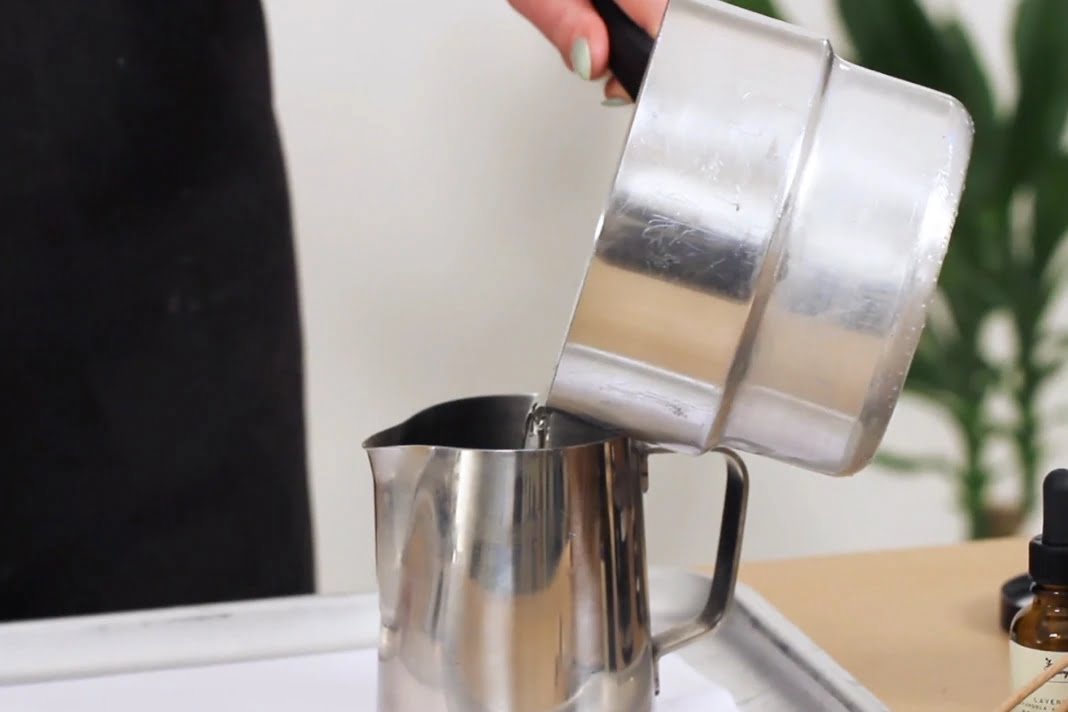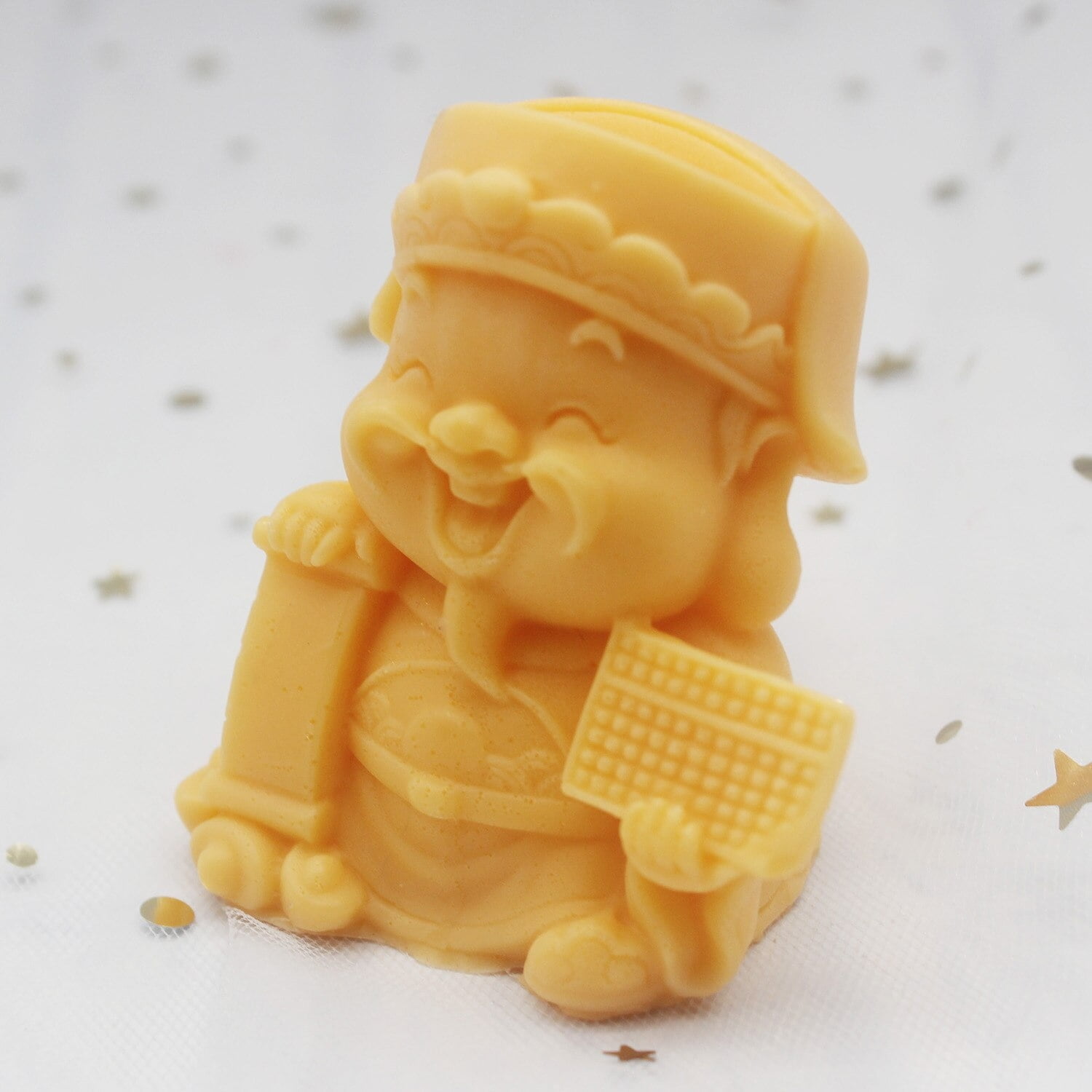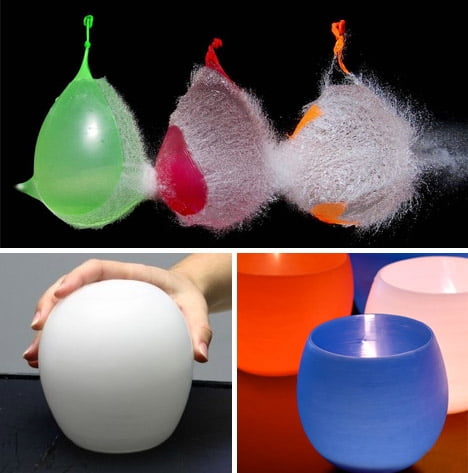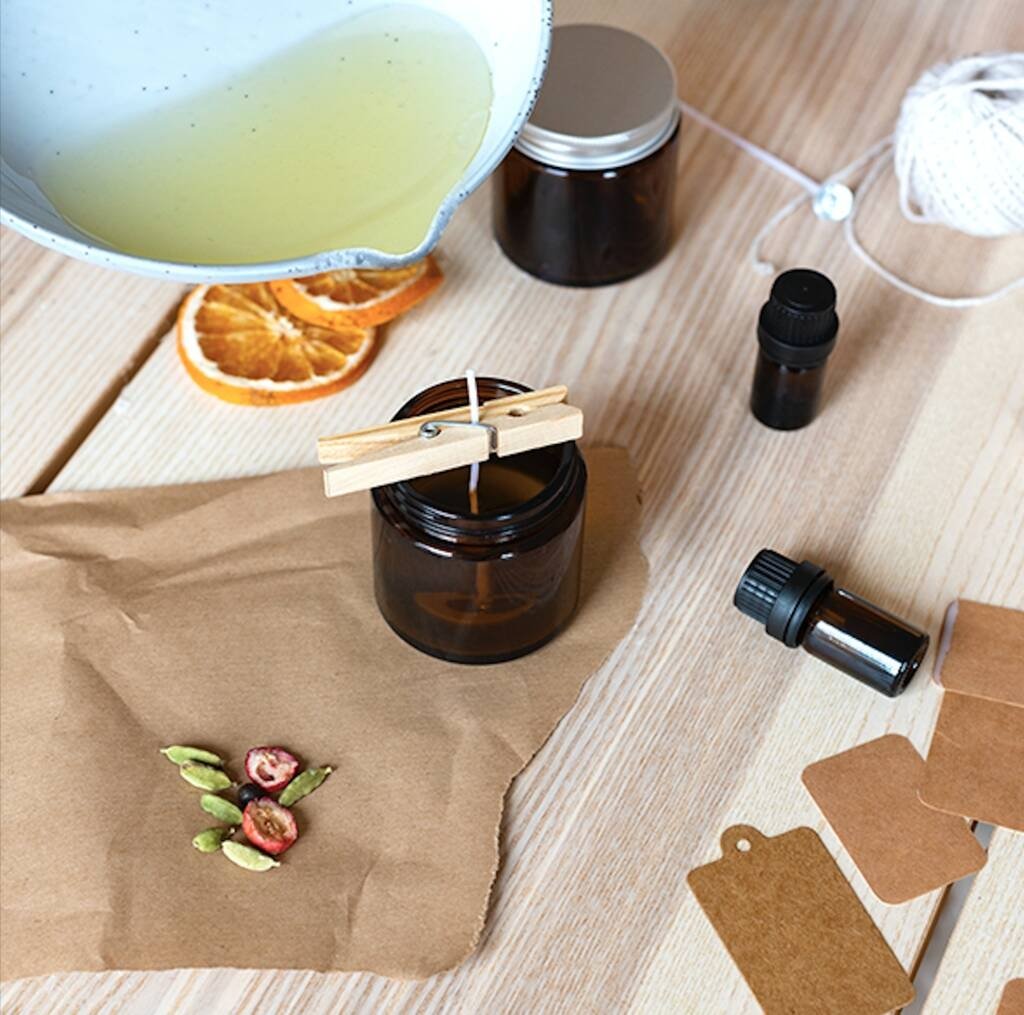Candle making is a captivating craft that has been practiced for centuries, with its origins dating back to ancient civilizations. While candles once served as a necessity for providing light, today they have become an expression of creativity, relaxation, and ambiance. This article explores the fascinating art of candle making, taking you through the step-by-step process, discussing the importance of choosing the right wax, exploring fragrance and coloring options, as well as providing safety precautions and troubleshooting tips.
Whether you are a beginner or an experienced candle maker looking to enhance your skills, this comprehensive guide offers valuable insights into the world of candle making. From understanding the history and significance of this age-old craft to unraveling the secrets behind achieving the perfect color and scent, every aspect of candle making is covered in detail.
By delving into the process of candle making, you will discover how even simple tools and materials can be transformed into stunning creations that bring warmth and joy to any space. The art of candle making allows you to unleash your creativity by experimenting with various colors, scents, molds, and decorative elements.
So join us on this journey as we dive deeper into the mesmerizing world of candle making. Whether it becomes a hobby or a profession for you, this guide will equip you with the knowledge and inspiration needed to create beautiful candles that brighten up any occasion or simply provide moments of tranquility in your everyday life.
History of Candle Making
Candles have been an integral part of human history for centuries, serving not only as a source of light but also as symbols in various rituals and religious ceremonies. The history of candle making dates back to ancient times, where the earliest evidence of candles can be traced to the ancient Egyptians and Romans.
In ancient Egypt, candles were made from animal fats and reeds, while in Rome, candles were primarily made from tallow – a substance derived from animal fat. These early forms of candles were simple and provided limited illumination. However, they played an important role in lighting tombs, temples, and households.
As civilization progressed, so did the techniques and materials used in candle making. In the Middle Ages, beeswax began to replace animal fats as a more refined and cleaner source for candle production. The use of beeswax not only produced a brighter flame but also emitted a pleasant scent when burned. However, due to the expense of beeswax, it was primarily used in religious ceremonies or by the upper class.
During the 18th century, advancements in technology led to major breakthroughs in candle making. The introduction of mechanized wax processing and the discovery of stearin – a byproduct of animal fat – resulted in the production of affordable tallow candles with improved burning qualities. This development democratized access to candles for a wider population.
In modern times, traditional wax materials have been largely replaced by paraffin wax – derived from petroleum or coal – due to its affordability and versatility. Additionally, alternative materials such as soy wax and palm oil wax have gained popularity due to their renewable nature and eco-friendly properties.
Understanding the history of candle making allows us to appreciate its evolution as both an art form and a functional item throughout different civilizations. Whether you are interested in creating your own candles or simply enjoy their illuminating presence, recognizing this rich heritage adds depth to our appreciation for these timeless objects.
The Importance of Choosing the Right Wax
Choosing the right wax is a crucial step in candle making that can greatly affect the quality and performance of your candles. There are several types of waxes available on the market, each with its own unique characteristics and benefits. In this section, we will explore the importance of choosing the right wax for your candles through a comparative analysis of different types of waxes.
Paraffin Wax
- Paraffin wax is one of the most commonly used waxes in candle making due to its affordability and availability.
- It has a low melting point and excellent scent throw, making it ideal for highly scented candles.
- However, paraffin wax is derived from petroleum, which raises concerns about its environmental impact.
Soy Wax
- Soy wax is made from soybean oil and is considered a natural alternative to paraffin wax.
- It has a lower melting point than paraffin wax and offers longer burning times.
- Soy wax is eco-friendly and renewable, making it a popular choice among environmentally conscious candle makers.
Beeswax
- Beeswax is produced by bees and known for its natural golden color and sweet honey-like scent.
- It has a high melting point, resulting in longer burning times compared to other waxes.
- Beeswax emits negative ions when burned, which can help purify the air and improve indoor air quality.
Coconut Wax
- Coconut wax is a newer option in the candle making industry that has gained popularity in recent years.
- It offers a clean burn with minimal soot or smoke and has excellent fragrance retention.
- Coconut wax blends well with other waxes, making it suitable for creating unique candle formulations.
When choosing the right wax for your candles, consider factors such as cost, burning time, scent throw, and environmental impact. Each type of wax has its own advantages and disadvantages, so it’s important to experiment and find the one that best suits your needs and preferences. Remember that the quality of the wax can greatly influence the overall quality of your candles, so take the time to research and make an informed decision.
Essential Tools and Materials Needed for Candle Making
Choosing the Right Wax: Key Considerations
One of the most crucial decisions when it comes to candle making is choosing the right wax. There are several options available, each with its own unique characteristics and qualities. Understanding these differences and choosing the appropriate wax is essential for achieving the desired results in your candle making endeavors.
- Paraffin Wax: Paraffin wax is a widely used choice for candle making due to its affordability and ease of use. It has a low melting point, which makes it quick to melt and solidify. However, paraffin wax can produce soot and may not be suitable for those who have allergies or sensitivities.
- Soy Wax: Soy wax is derived from soybean oil and is known for its renewable and eco-friendly properties. It burns cleaner than paraffin wax and has a longer burn time. Soy candles also tend to have a more subtle scent throw compared to other waxes.
- Beeswax: Beeswax is a natural alternative that offers a beautiful, warm glow and a subtle honey-like scent when burned. It has a higher melting point than both paraffin and soy wax, which can make it more challenging to work with for beginners.
- Coconut Wax: Coconut wax is another popular choice in candle making due to its natural origin and clean-burning properties. It has excellent fragrance retention and provides a smooth finish on candles.
Essential Tools for Candle Making
Aside from choosing the right wax, having the necessary tools on hand is vital for a successful candle making experience. Here are some essential tools you’ll need:
- Double Boiler or Melting Pot: A double boiler or melting pot is essential for melting your chosen wax safely without direct heat contact.
- Thermometer: A thermometer will help you monitor the temperature of your melted wax accurately, as different waxes require specific temperature ranges for optimal performance.
- Heat Source: Whether it’s a stove, hot plate, or electric wax melter, you’ll need a reliable heat source to melt your wax.
- Molds or Containers: Depending on the desired shape and size of your candles, you’ll need molds or containers to pour your melted wax into.
- Wicks: Wicks serve as the fuel delivery system for your candle. It’s important to choose the right size and type of wick based on the diameter and composition of your candle.
- Wick Tabs or Stickers: Wick tabs or stickers are used to secure the wick at the bottom of your container and keep it centered during pouring.
- Fragrance Oils or Essential Oils: If you want scented candles, fragrance oils or essential oils will add delightful aromas to your creations.
- Dyes or Colorants: Dyes or colorants can be added to your wax to achieve vibrant or subtle colors in your candles.
By having these essential tools and materials ready, you’ll be well-equipped to begin your candle making journey with confidence and creativity. Remember to always follow safety precautions and guidelines when working with hot wax and open flames.
Step-by-Step Process
Once you have gathered all the necessary tools and materials for candle making, it’s time to dive into the step-by-step process. This section will guide you through the entire process, from melting the wax to molding or pouring it into your desired candle shape.
Step 1: Choose Your Wax
Before you begin melting the wax, make sure you have chosen the right type of wax for your candles. There are various options available such as paraffin wax, soy wax, beeswax, and gel wax. Each type has its own characteristics and advantages, so choose based on your preferences and the kind of candle you want to create.
Step 2: Preparing Your Workspace
Creating a clean and organized workspace is essential for a smooth candle-making process. Place newspapers or a plastic tablecloth on your work surface to protect it from any spills or drips. Set up all your tools within easy reach to avoid unnecessary trips back and forth during the process.
Step 3: Melting the Wax
Now it’s time to melt your chosen wax. If you’re using solid blocks or pellets of wax, place them in a double boiler or a heat-resistant container set inside a pot filled with water. Gently heat over low to medium heat until the wax completely melts. Alternatively, you can use a microwave-safe container if specified by the manufacturer.
Step 4: Adding Fragrance (Optional)
If you wish to add fragrance to your candles, this is the time to do so. Once the wax has melted, carefully stir in fragrance oils or essential oils of your choice. Be mindful of following recommended guidelines for fragrance oil concentration as adding too much may affect the quality and burn of your candles.
Step 5: Molding or Pouring
Depending on your desired candle shape, you can either pour the melted wax directly into a pre-made container or mold, or use a wick to create a traditional tapered candle. If using containers, ensure they are clean and dry before pouring in the wax. For molded candles, prepare the molds by applying a mold release spray or lining them with aluminum foil. Carefully pour the wax into the molds or containers and allow them to cool and solidify.
Step 6: Finishing Touches
Once your candles have solidified, it’s time to trim the wicks if necessary and add any decorative touches. Use scissors or a wick trimmer to trim the wicks to about half an inch above the surface of the candle. You can also add embellishments like dried flowers, ribbons, or glitter to personalize your candles.
Following these steps will help you master the process of creating beautiful homemade candles. Remember to exercise caution when working with hot wax and always follow safety guidelines. With practice and creativity, you’ll soon be able to make candles that not only provide warmth and light but also reflect your personal style.
Understanding Fragrance Oils and Essential Oils
Fragrance oils and essential oils are key elements in candle making that allow you to add delightful scents to your creations. Understanding the difference between these two types of oils and how to use them properly will help you create candles that not only look beautiful but also smell amazing.
Fragrance oils are synthetic blends of various aromatic compounds that mimic different scents such as fruits, flowers, spices, and more. They are typically made in a laboratory and offer a wide range of options for candle makers. Fragrance oils tend to have a stronger scent throw than essential oils, meaning they can fill a room with fragrance more effectively. They are also generally less expensive than essential oils.
On the other hand, essential oils are derived from plant materials through various extraction methods such as steam distillation or cold pressing. These natural oils possess the true aroma and therapeutic properties of the plants they come from. While they may have a more subtle scent compared to fragrance oils, essential oils offer the benefits of aromatherapy and can contribute to a relaxing and calming environment.
When using fragrance oils or essential oils in candle making, it is crucial to ensure that they are safe for use in candles. Certain fragrances or essential oils may not be suitable for burning or may have limitations on their usage levels. It is important to check with your supplier or perform proper research before incorporating any fragrance or essential oil into your candles.
| Fragrance Oils | Essential Oils |
|---|---|
| Synthetic blends | Natural plant extracts |
| Wide range of scents available | Limited scent options |
| Strong scent throw | Subtle scent |
| Less expensive | More expensive |
| No therapeutic properties | Aromatherapeutic benefits |
Both fragrance oils and essential oils can be used individually or blended together to create unique scents for your candles. Experimenting with different combinations and ratios will allow you to discover your signature fragrances and add a personal touch to your creations.
Achieving the Perfect Color
When it comes to candle making, achieving the perfect color is an essential aspect of creating unique and visually appealing candles. Dyeing techniques play a crucial role in adding vibrant hues and enhancing the overall aesthetic of your candles. In this section, we will explore various dyeing techniques and provide helpful tips to achieve the perfect color for your candle creations.
Choosing the Right Dye
The first step in achieving the perfect color for your candles is selecting the right dye. There are various types of dyes available in the market, including liquid dyes, powdered dyes, and dye chips. Liquid dyes are easy to use and offer a wide range of color options. On the other hand, powdered dyes are more concentrated and require careful measurements for accurate coloring. Dye chips are pre-measured dye blocks that offer convenience and consistent coloring.
Techniques for Adding Color
There are several techniques you can use to add color to your candles. One popular technique is called overdipping or double-dipping, where you dip a white or lightly colored candle into a colored wax multiple times to create layers of different colors. Another technique is called marbleizing, which involves swirling different colored waxes together to create an intricate marbled effect.
For a more uniform coloring, you can also consider using a method called solid-colored dip or pour. In this technique, you simply add the desired amount of dye into the melted wax and mix until fully incorporated before pouring or dipping the candles. This method allows for consistent coloring throughout the entire candle.
Tips for Successful Coloring
To achieve consistent and vibrant colors in your candles, here are some helpful tips:
– Start with a small amount of dye and gradually increase until you reach your desired shade.
- Mix well: Ensure that the dye is thoroughly mixed with the melted wax to prevent clumps or uneven distribution.
- Test the color: Before pouring or dipping all your candles, it is advisable to test the color on a small sample candle to ensure you achieve the desired results.
- Keep track of measurements: If you are using powdered dyes, carefully measure and record the amount used for each batch to replicate the colors in future projects.
Color adds an extra dimension to your candles, making them visually appealing and captivating. By selecting the right dye and employing different techniques, you can achieve stunning colors that make your candles stand out. Experiment with different color combinations and techniques to unleash your creativity and create truly unique candle masterpieces.
Decoration and Finishing Touches
Once you have mastered the basic candle making process, it’s time to take your creations to the next level with decoration and finishing touches. Adding embellishments to your candles can take them from simple to stunning, creating a unique and personalized touch that is sure to impress. In this section, we will explore different techniques and ideas for beautifying your candles.
Embedding
Embedding objects into your candles can add interest and create a focal point. You can embed various items such as dried flowers, seashells, gemstones, or even small trinkets like charms or beads. To do this, simply arrange the objects on the bottom of your mold or container before pouring the melted wax over them. Make sure to choose heat-resistant items and position them strategically for optimal visibility.
Layering Colored Wax
Creating layers of different colored wax adds depth and visual appeal to your candles. To achieve this effect, pour one layer of wax into the mold or container and allow it to slightly cool and form a skin on top. Then pour another layer in a contrasting color on top of the first layer.
Repeat this process until you have reached your desired number of layers. You can also experiment with different pouring techniques or use a tool like a skewer to create swirls or patterns within each layer.
Etching
Etching designs onto the surface of your finished candles can be an elegant way to add texture and detail. You can use special etching cream or tools specifically designed for candle etching, available at craft stores. Apply the cream or use the tool to gently scrape away wax from certain areas, revealing a contrasting design underneath. This technique works best with pillar candles or those with smooth surfaces.
Adding Ribbons and Embellishments
A simple way to enhance the look of your candles is by adding ribbons or other decorative elements. You can tie a ribbon around the base of the candle, create a bow, or even wrap it around the entire container for a more intricate design. Additionally, you can glue on small embellishments like beads, sequins, or rhinestones to give your candles a touch of sparkle.
By incorporating these decoration and finishing touches into your candle making process, you can transform your creations into stunning works of art. Don’t be afraid to experiment and let your creativity shine through. Whether you prefer simple elegance or bold statement pieces, there are endless possibilities for embellishing your candles and making them truly unique.
Safety Precautions and Tips for a Successful Candle Making Experience
Candle making is a fun and creative craft that can be enjoyed by people of all ages. However, like any other activity involving heat and potentially flammable materials, it is important to prioritize safety while making candles. Taking the necessary precautions will not only ensure a successful candle making experience but will also protect you and your loved ones from any potential accidents or hazards.
One of the first safety precautions to consider when making candles is to choose a well-ventilated area for your workspace. This will help prevent the buildup of fumes from melting wax, fragrance oils, and dyes. It is also important to work on a clean and stable surface, away from any flammable objects or materials.
When working with hot wax, it is essential to use proper protective gear such as gloves and aprons to avoid burns. Handling hot wax can be dangerous, so be sure to exercise caution at all times. Additionally, keep a fire extinguisher nearby in case of emergencies.
Another vital safety tip is to never leave melting wax unattended. Wax has a low flash point and can catch fire easily if left on direct heat for too long. Always stay attentive and have a designated “hot plate” or double boiler set up specifically for melting wax.
| Year | Number of Candle-Related Accidents |
|---|---|
| 2017 | 8,200 |
| 2018 | 7,500 |
| 2019 | 6,900 |
By following these safety precautions and tips, you can ensure a successful and enjoyable candle making experience. Remember, safety should always be the top priority when engaging in any craft or DIY activity. So, unleash your creativity, have fun, and enjoy the art of candle making.
Troubleshooting Common Issues
When it comes to candle making, there may be times when you encounter various issues that affect the quality and performance of your candles. This section will address some common problems that candle makers face, including fragrance issues and uneven burning. By understanding these issues and learning how to troubleshoot them, you can ensure that your candle making experience is successful.
One common issue in candle making is fragrance problems. Sometimes, the scent of a candle may not be as strong as desired or may fade quickly after burning. This can be disappointing, especially if you put effort into choosing the perfect fragrance oil or essential oil for your candles.
To address this problem, it’s important to properly calculate and measure the amount of fragrance oil used in your wax. It’s recommended to follow the guidelines provided by the supplier or manufacturer to ensure accurate measurements. Additionally, allowing your candles to cure for a sufficient amount of time before burning can help enhance their scent throw.
Another issue that candle makers often encounter is uneven burning. This means that the candle burns unevenly, with some areas melting faster than others or leaving untouched wax along the sides of the container or mold. Uneven burning can be caused by factors such as wicks that are too small for the diameter of the container or poor wick placement.
To address this problem, it’s important to choose an appropriate wick size based on the diameter and type of your container or mold. Conducting burn tests before producing larger batches of candles can help determine the most suitable wick for your specific application.
In summary, troubleshooting common issues in candle making involves addressing fragrance problems and uneven burning. By accurately measuring fragrance oils and allowing proper curing time for enhanced scent throw, you can overcome fragrance issues in your candles. For uneven burning, ensuring correct wick size and placement is crucial for achieving uniform melting and avoiding wasted wax. By understanding and addressing these common problems, you can create high-quality candles that will delight your senses.
Conclusion
Candle making is a captivating and artistic craft that allows individuals to unleash their creativity and create beautiful, customized candles. Throughout history, candle making has evolved from its ancient origins to become a modern craft, incorporating various techniques and innovations.
By understanding the importance of choosing the right wax, utilizing essential tools and materials, following a step-by-step process, adding fragrance and color, decorating with finesse, and taking safety precautions, anyone can embark on an enjoyable and successful candle making experience.
One of the most exciting aspects of candle making is the opportunity it provides to showcase individual creativity. From experimenting with different colors, fragrances, shapes, and designs to exploring unique methods of decoration and embellishment, there are endless possibilities to personalize candles. Whether using traditional techniques or pioneering new ones, candle making offers individuals the chance to express themselves artistically.
Moreover, candle making can provide a therapeutic experience for many. It allows individuals to relax and unwind while engaging in a creative process. The act of creating something with one’s hands can be incredibly fulfilling and rewarding. Not only does it provide a sense of accomplishment but also brings about a sense of peace and tranquility.
In conclusion, candle making is much more than just a simple craft; it is an art form that enables people to tap into their creativity and immerse themselves in a meditative activity. With the right tools, materials, knowledge, and techniques at hand, anyone can enjoy the process of candle making while crafting unique creations that bring warmth and beauty into their homes or serve as thoughtful gifts for loved ones.
So gather your supplies, let your imagination run wild, ignite your passion for creativity, and embark on an exciting journey into the world of candle making.
Frequently Asked Questions
How are candles made step by step?
The process of making candles typically begins with the melting of the wax. This can be done in a double boiler or a specialized melting pot. Once the wax has reached its desired temperature, any fragrance oils, colorings, or additives can be added. These additional elements serve to enhance the candle’s scent and appearance.
Next, a wick is dipped into the melted wax several times to build up layers, allowing it to absorb and hold the wax. The wick is then attached to a base or sustainer that will anchor it at the bottom of the finished candle. The excess wax is poured into a mold or container, which gives shape to the final product. After allowing sufficient time for the wax to cool and harden, any necessary finishing touches are made, such as trimming the wick and applying decorative labels or packaging.
How is a candle made?
Candle making generally involves several key steps that result in creating a functional and decorative light source.
While there may be variations in individual techniques, the basic process consists of melting wax, adding desired scents and colors if desired, dipping a wick into this mixture multiple times until it builds up an adequate coating of absorbed wax for burning, attaching it to a base or sustainer for stability, pouring any remaining melted wax into a mold or container for shape formation, allowing time for cooling and hardening, and finally refining details like trimming wicks and labeling or packaging.
How long is the candle making process?
The duration of the candle making process can vary depending on various factors such as the type of candle being made, size of production run, and intricacy of design. Generally speaking though, making candles from start to finish can take several hours or even days depending on complexity.
This includes time required for melting and preparing the wax mixture with fragrances and colorants (if used), dipping wicks multiple times to achieve optimal thickness, mold preparation if applicable (e.g., warming molds or lining containers), allowing for sufficient cooling and solidifying time, and performing any final touches such as trimming excess wick or adding decorative elements. Additionally, there may be additional time needed for quality testing, packaging, and labeling efforts before the candles are fully ready for sale or use.

Welcome to my candle making blog! In this blog, I will be sharing my tips and tricks for making candles. I will also be sharing some of my favorite recipes.





